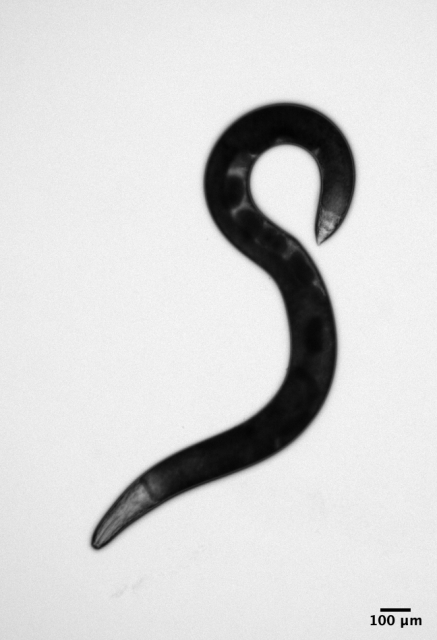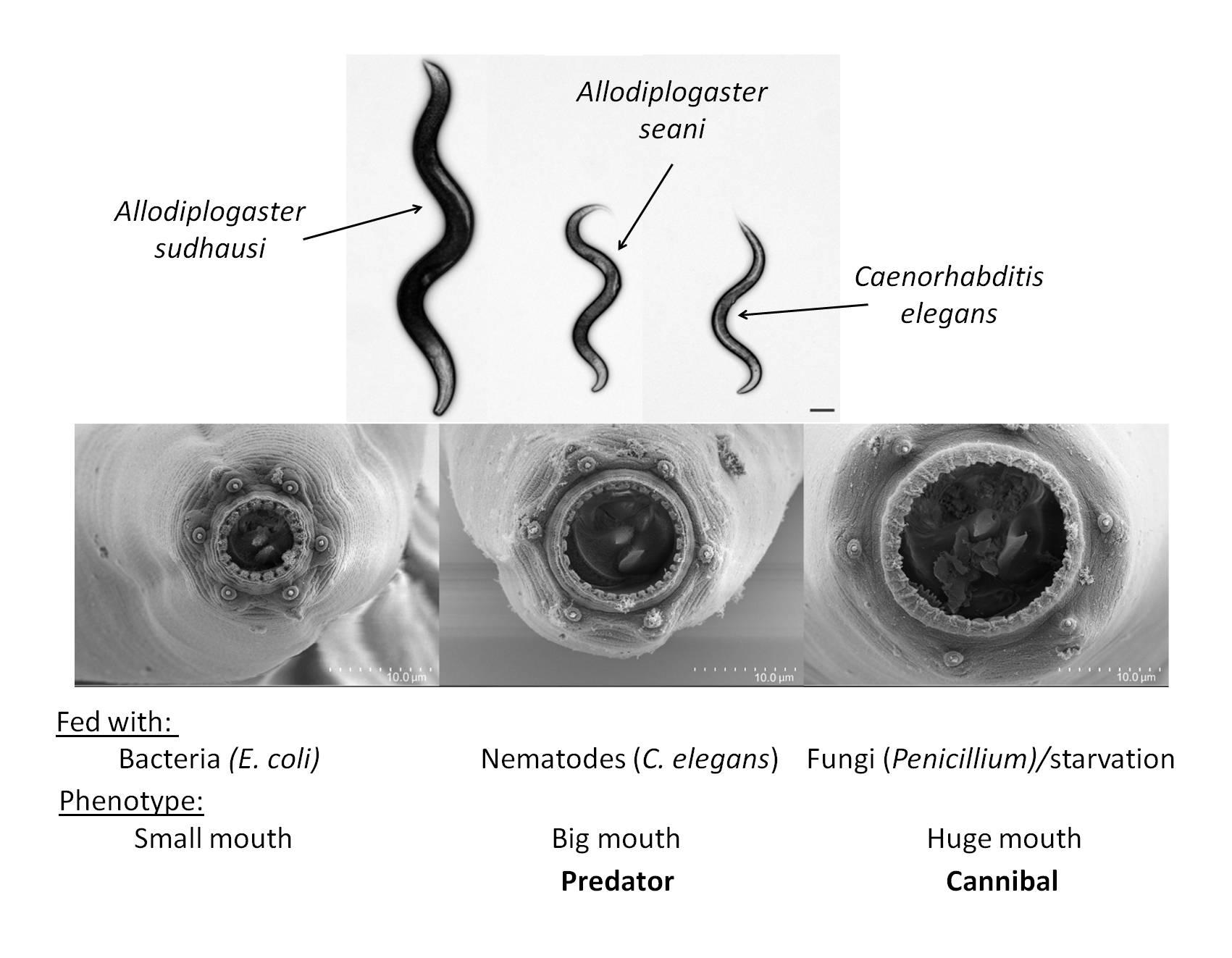A. sudhausi, the superworm
Author: Ramón Muñoz-Chápuli has been Professor of Animal Biology in the University of Málaga until his retirement. He has investigated for forty years in the fields of developmental biology and animal evolution.
Nematode worms may not be very popular, but what we know about their abundance is astonishing. After arthropods, chordates, and molluscs, they constitute the animal phylum with the most species, with about 26,600 described, although it is believed that the actual number is much higher. Even more surprising is the quantity of nematodes surrounding us.
Though we lack much information about nematodes, some scientists believe they could be the most abundant animals on the planet. A recent study published in Nature 1 showed that in just one hundred grams of soil from a deciduous or boreal forest, there are on average over 2000 nematodes. In Mediterranean forests, there would be fewer, around 400 per 100 grams of soil. This study estimated the number of nematodes in the surface layer of the soil at 4.4 × 10^20, with a biomass somewhat lower than that of all the humans on the planet. Their respiration contributes to the atmosphere with an amount of carbon equivalent to 15% of that derived from fossil fuels. Additionally, it’s important to remember that these soil nematodes make up only a quarter of the total known species, as another 25% are parasites of plants or animals, and half of all known species live in the ocean.

Nematodes are usually small worms, generally millimetres in size. Among them, Caenorhabditis elegans is particularly well-known, since it is an experimental model in many laboratories. But the nematode we are going to address now, which is proving to be particularly surprising, is Allodiplogaster sudhausi, discovered in 2008. This worm is larger than its closest relatives, exceeding 2 mm in size. This difference was explained in 2022 when it was discovered 2 that its genome had recently duplicated. The genome is sized at 357 Mb (millions of base pairs), including around 40,000 genes, compared to the 160 Mb and 20,000 genes of other closely related species.
Whole genomic duplication is a phenomenon of great evolutionary significance. For instance, at the early stages of vertebrate evolution, two rounds of whole genomic duplication occurred, providing us with four potential copies of each ancestral gene. We can relate this genetic richness to the great diversity of forms within our taxonomic group. The importance of the discovery in A. sudhausi resides in the chance of studying the evolutionary consequences of a recent genomic duplication event.
The culture of this worm in the laboratory also allowed researchers to observe its developmental plasticity, as seen in many nematodes. This means that its final organization (its phenotype) can vary due to the environment in which it develops, despite starting from the same genetic information.
Developmental plasticity, or polyphenism, is a common phenomenon among many animals. For example, there are butterflies that, depending on whether they develop in a wet or dry season, acquire vivid colors or muted tones to blend in with their surroundings. More dramatically, the case of the desert locust (Schistocerca gregaria) is notable. They are normally solitary, but if their juveniles grow in a rich and densely populated environment, contact between them triggers a change in their shape and also in the production of pheromones that determine their behaviour. They then tend to swarm and devastate the vegetation.
The polyphenism of A. sudhausi is induced by the food. If it feeds on bacteria, it develops a small mouth, but if it grows in the presence of Caenorhabditis elegans, its mouth becomes larger to easily devour them. This also occurs in other closely related species where it has been shown that the final size of the mouth depends on a hormonal receptor activated by an enzyme, specifically a sulfatase.

Researchers at the Max Planck Institute for Biology (Tübingen, Germany) have just shown 3 that if A. sudhausi is cultured on Penicillium fungi, it develops a third phenotype, with a much larger mouth and a cannibalistic behaviour that does not appear in the other two phenotypes. The reason for this behaviour is the low nutritional level of the fungi. In fact, both fasting and overpopulation also trigger this change to a huge mouth and cannibalistic behaviour. Although in other species, for example, in some amphibians, it has been observed that lack of food can lead larvae to practice cannibalism, only in the case of A. sudhausi this behavior is extreme, not respecting the worm’s own siblings.
The possibility of developing three phenotypes (small, large, or very large mouth) is related to the fact that A. sudhausi has two genes for sulfatase, thanks to its genomic duplication. Nutritional stress during development leads to expression of both genes, greater activation of the hormonal receptor, and consequently an increase in mouth size with induction of cannibalistic behaviour. In fact, mutation of one or the other sulfatase gene reduces the frequency of the cannibalistic phenotype in the population, and the double mutation completely blocks it.
The relevance of this discovery lies in the fact that a genomic duplication event expanded the options for developing new phenotypes capable of adapting to different environmental conditions. This also underscores the evolutionary potential of developmental plasticity, a topic that has garnered much interest in recent years.
References
- van den Hoogen, J., Geisen, S., Routh, D. et al.(2019) Soil nematode abundance and functional group composition at a global scale. Nature doi: 10.1038/s41586-019-1418-6 ↩
- Sara S Wighard et al. (2022) A New Hope: A Hermaphroditic Nematode Enables Analysis of a Recent Whole Genome Duplication Event Genome Biology and Evolution doi: 10.1093/gbe/evac169 ↩
- Sara Wighard et al. (2024) Conserved switch genes that arose via whole-genome duplication regulate a cannibalistic nematode morph. Sci. Adv. doi: 10.1126/sciadv.adk6062 ↩